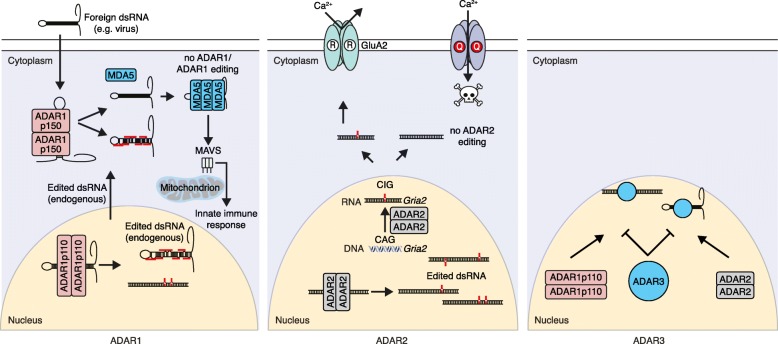Fig. 1.
The roles of ADAR1, ADAR2, and ADAR3. ADAR1 is present in the nucleus (ADAR1 p110) and cytoplasm (ADAR1 p150) and can edit endogenous RNA. ADAR1 is required to edit endogenous RNA to prevent the activation of the cytosolic pattern recognition receptor MDA5 in the cytosol, leading to induction of the innate immune/interferon response. ADAR1 can also edit viral dsRNA and participate in the innate immune response as a direct interferon-stimulated gene (ADAR1 p150 isoform). The absence of ADAR1 or the absence of ADAR1-mediated editing leads to innapropriate activation of the MDA5–MAVS axis. ADAR2 is essential for site-selective editing and is very highly expressed in the brain and central nervous system. The editing of Gria2 at the Q/R site is ADAR2 specific and is required to recode the transcript to form a functional GluA2 protein and allow survival. ADAR3 competes with ADAR1 or ADAR2 for binding to dsRNA substrates, which then are protected from editing due to ADAR3 not having deamination activity

